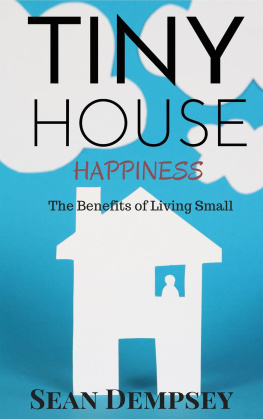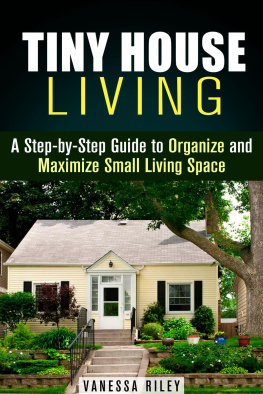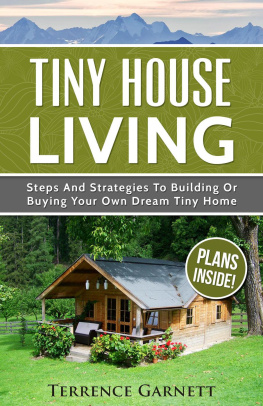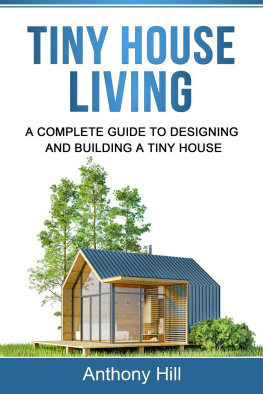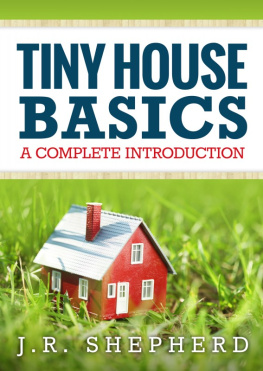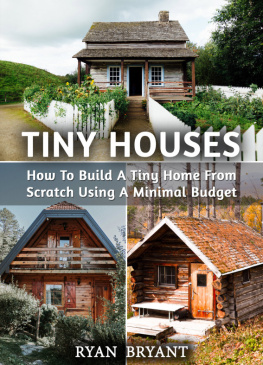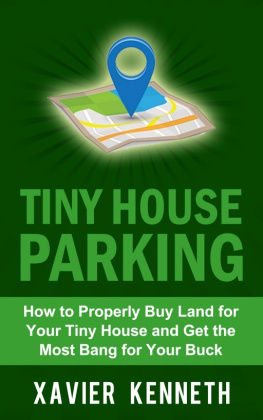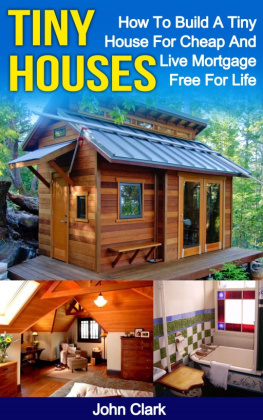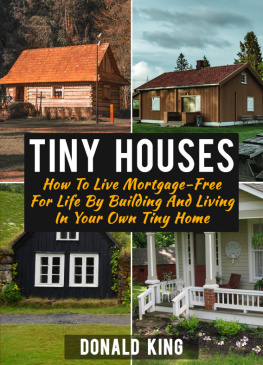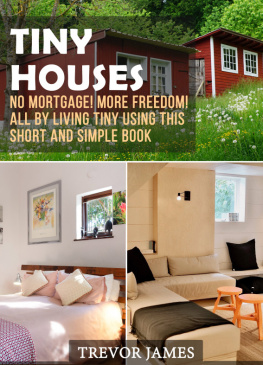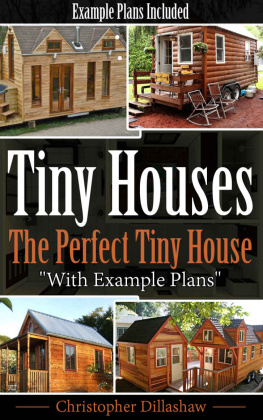The Tiny House :
Steps and Tips on How you can build a tiny house quickly and save money.
By Carol Marshall
Copyright 2016 WE CANT BE BEAT LLC
Table of Contents
Chapter One: Where Can I Live?
Are you aware of tiny houses? Do you know what the tiny house movement is all about? Have you ever heard of the concept of tiny living?
To put it simply, this is a social movement that has convinced people to downsize the space that they choose to live in. A typical American home is around 2,600 square feet whereas the smaller, tiny houses range between 100 to 400 square feet in acreage. A tiny house can be found in all forms, shapes, and sizes while enabling a simpler living in a smaller, more efficient space for the residents.
There are a number of reasons why people have started joining this movement with the most popular ones being financial and environmental concerns, and the desire to enjoy more freedom and time. Most Americans have 1/3 to of their income dedicated towards maintaining a roof over their heads. Numerically, this totals around 15 years of working over ones lifetime just so that they are able to pay for a home. This is one of the biggest reasons why 76 percent of Americans have been found living from one paycheck to another.
The next big question is, do people have an alternative? One of the probable solutions is to live in a smaller space. While tiny houses are not best suited for everyone there are plenty of lessons to be learned and applied in order to beat the debt cycle that almost 70 percent of Americans find themselves trapped in.
Why its Worthwhile to Live in a Tiny House
As we have already been mentioned, not everyone can enjoy and be comfortable with the idea of living in a tiny house. In a country where an average house is of 2400 square feet, staying confined within a space of 160 square feet may sound like a deplorable idea to many.
It is all down to the basics needs of any human being water, food, and shelter. In the parlance of the modern world that equates to four walls and a roof, a place to sleep, a place where you can wash yourself, a means of cooking your meals, provision of clean running water, and a method by which residents can dispose waste products. Everything else that we see around us is ideally a luxury and not a necessity.
The beauty of living in a tiny house is that it provides all of these luxuries as well as amenities while still possessing some of the creature comforts you would normally associate with a large house. At the same time, it ensures that the owners are not sanctioned with the same amount of financial burden or environmental impact. When you have less to worry about you get more time to do the things that you typically love to do!
In French, the term mortgage literally means death contract. Most people end up spending thirty years in paying for their property with the eventual cost being twice than the original thanks to interests. Housing always translates to the largest expense but it is not always necessary that it has to be that way.
The large amount of time and money spent in paying off a mortgage can be better utilized in other directions. You could spend more time creating new experiences with your loved ones rather than staying cooped up in a cubicle after all, you live only once!
One of the first reasons why you should start living in a tiny house is because it sets you apart from the rat race. Your environmental footprint reduces dramatically when you live in a tiny house. The realization is slowly starting to dawn upon individuals that plenty of damage has been done to the environment and a change is necessary.
Downsizing makes for a path in the right direction. Reclaimed and recycled materials are increasingly being used in the construction of tiny homes. The small size creates a smaller demand for electricity which can be handled with the help of a few solar panels. Being environmentally responsible citizens is another reason why we should adapt to living tiny.
Living in a tiny house comes with its fair share of disadvantages; there can be no argument in this regard. Lack of space is probably one of the biggest issues though it can also be looked upon as a blessing since you will be limited to only the things that you can own and there wont be space for unnecessary expenses.
With the space crunch, tedious tasks such as cleaning the home can become faster. Rather than letting your things have control over you, you get to exercise control over your belongings. You will be forced to think about all that you can bring home for a simple packaging item or fast food container can end up making a quick mess.
Inmates of a tiny house need to be responsible and recycle what they can. For a hoarder, living in a tiny house will be next to impossible! However, a single person would find a tiny house to be a wonderful solution though family people may find themselves facing challenges. This type of accommodation may not be suitable even for couples owing to the lack of privacy but with better understanding between them things can work out just fine.
Here are 10 reasons that sum up why you would be better off living in a tiny house.
Less Initial Cost
It goes without saying that a tiny house is smaller than a traditional home. It involves the use of less labor and material largely because of its size. Most features of a traditional home can be found in a tiny house such as flooring, roof, plumbing, and kitchen, among others. As a result, the per-square-foot price works out to be very expensive. However, since the overall space is very small you have to pay only a fraction of the net price of purchasing a traditional home.
Less Energy Consumption
A tiny home requires much less energy for heating and cooling simply because the interior air space is so small. With a number of these homes being on wheels, it is possible for the owner to move his house under a large tree in the summer and out into the open sun during winter.
Hot water heaters and refrigerators are two of the biggest energy consumers in any home. In a tiny house they are smaller and consume a far lesser amount of energy. You also need to use less of your own energy since the space to be cleaned and maintained is very small.
Less Water Consumption and Trash
With a small shower and small water heater in place, it can be assumed that your showers will be a whole lot shorter than otherwise. Also, with a small trash can the amount of waste in being generated will be less. Using less water and generating less trash is not only good for the environment but also for your wallet.
Less Repair Costs
Determining the repair costs of a tiny home is no more than a matter of simple mathematics. The cost of replacing the roof of a 2000 square feet home will be a great deal more than that of a 300 square feet home because of the reduction in labor and material costs.
Less Land Required for Purchase and Upkeep
A small dwelling will require significantly less amount of land to reside on. With many cities having restrictions on the size of a home, it may be necessary to purchase land outside the city limits where there are no restrictions. Here, not only is the land cheaper but also you are required to pay less taxes. With a very small plot of land for your home, you can spend less time cutting the grass but still have sufficient space for a garden.
Less Food
With a small pantry, the amount of food to be stored in the house reduces. When you have fresh vegetables growing on your garden patch, you will have to spend less money on buying produce from the market. By eating less food in your tiny home you can keep both your weight and food bills down.
Less Tax to Pay
Since the tiny home and the land this property stands on are less valuable, the tax bill will also be less. You can put forth the savings towards investments, donations, vacations, educations for your children, or in planning for retirement.
Next page

